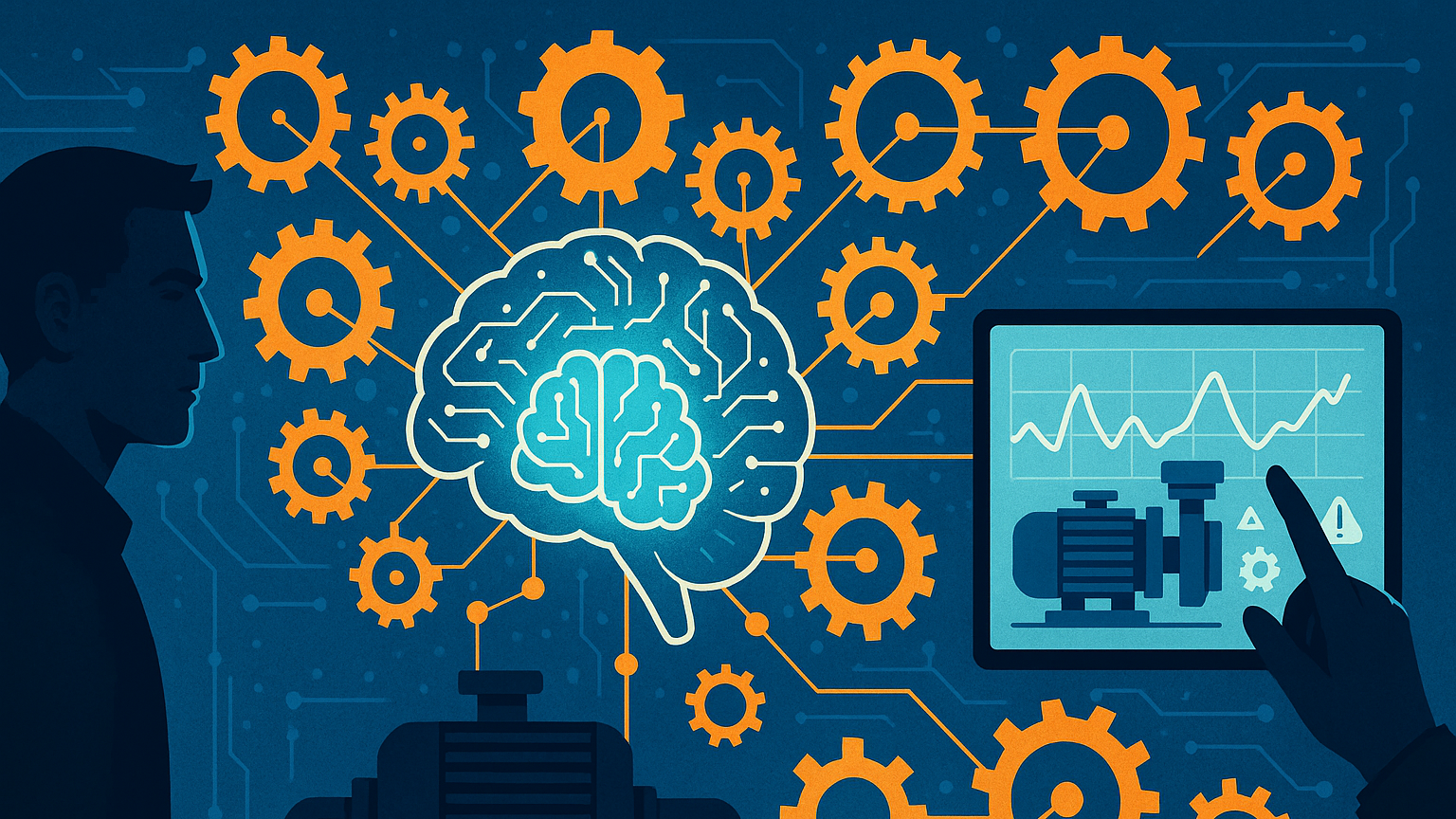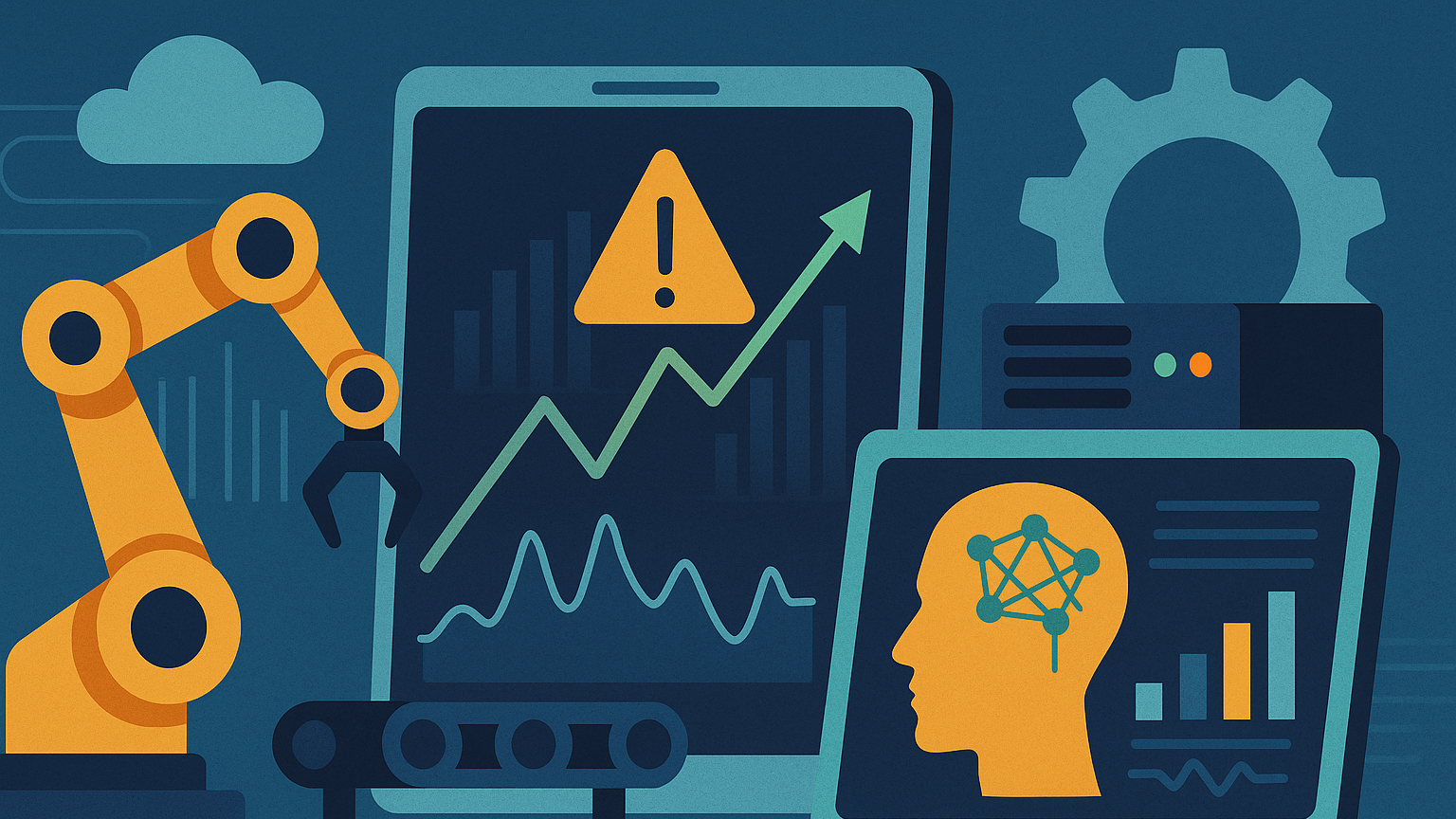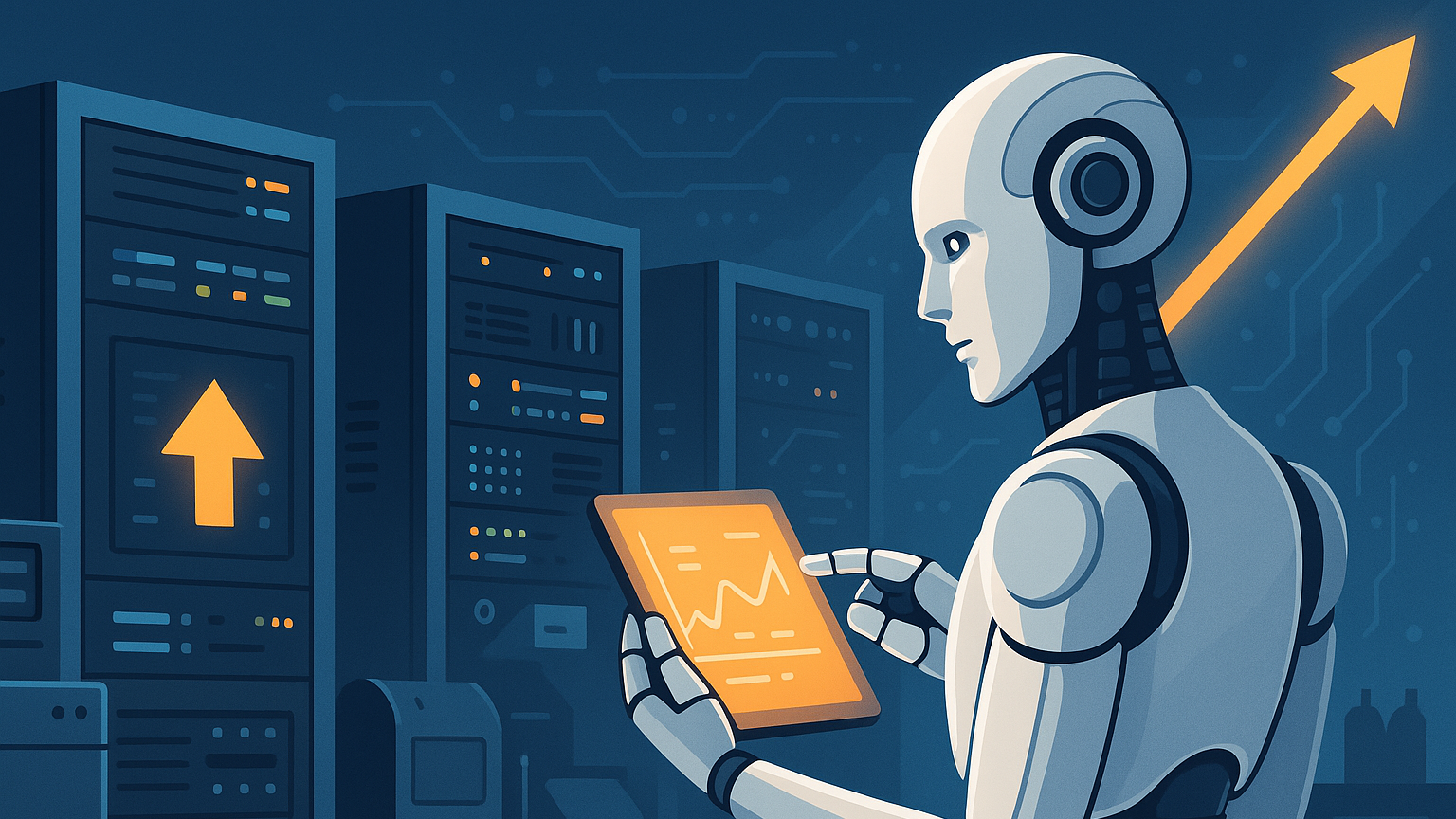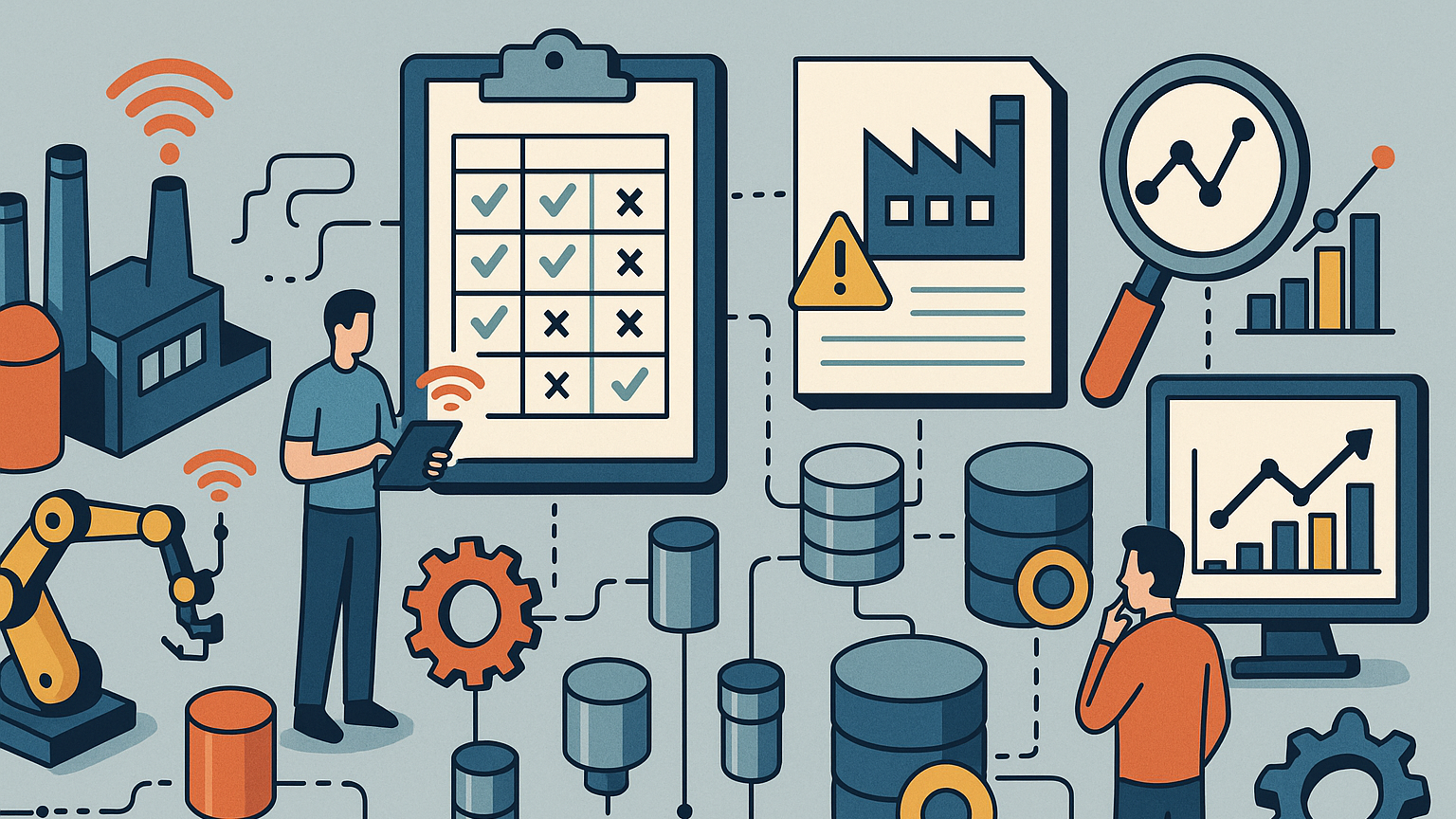
AI Awareness and Technology Refresh Strategies for Equipment Optimization
You’re trying to keep equipment running reliably, reduce costs, and squeeze more value from your assets. AI awareness and smart technology refresh strategies are two levers you can pull to make that happen. This article walks you through what AI means for equipment optimization, how to plan and execute technology refreshes, and the practical steps you can take to deploy AI-driven maintenance and asset management that actually improves outcomes. You’ll get concrete advice on planning, vendor selection, integration, metrics, workforce readiness, and how to avoid common pitfalls.
Understanding AI Awareness for Equipment Optimization
AI awareness is about knowing which AI capabilities matter for your equipment lifecycle, where they add the most value, and how they change roles and processes. It’s both strategic and tactical — you need to understand the business outcomes AI can unlock and the operational realities of integrating it with sensors, control systems, and maintenance teams. Developing AI awareness means you can separate hype from practical tools that reduce downtime, extend asset life, and lower total cost of ownership.
What AI awareness means for you
When you become AI-aware, you start seeing maintenance problems as data problems first, then as engineering problems. You’ll recognize which assets are ripe for predictive approaches, which datasets matter, and how to structure pilots so they produce clear ROI. AI awareness helps you set realistic expectations, ensure project governance, and align stakeholders across operations, IT, and finance so your refresh initiatives aren’t just technology projects but business transformations.
How AI is changing maintenance and asset management
AI is shifting maintenance from reactive and time-based schedules to condition-based, predictive, and prescriptive strategies. Instead of replacing parts on a calendar, you can predict when a bearing will fail, recommend the optimal repair window, and automatically trigger procurement and workforce scheduling. For you, this means less unplanned downtime, smarter spare parts policies, and the ability to prioritize scarce maintenance resources where they deliver the most value.
Core AI Technologies Relevant to Equipment Optimization
A handful of AI technologies drive the biggest improvements in equipment optimization. Knowing what each one does helps you match technology to business goals and decide where to refresh your tech stack first. The key technologies include predictive analytics, edge AI, digital twins, computer vision, and sensor fusion.
Machine learning and predictive analytics
Machine learning models detect patterns in historical and real-time data to forecast failures and performance degradation. For you, predictive analytics turns raw telemetry into actionable insights, enabling condition-based maintenance that reduces unnecessary interventions and shortens mean time to repair. When designing refresh strategies, prioritize systems that support data collection, storage, and model deployment to make predictive analytics feasible.

Edge AI and IoT
Edge AI brings inference and sometimes model training closer to the equipment, reducing latency and preserving bandwidth. If you operate in environments with limited connectivity or where rapid decisions matter, edge devices let you run anomaly detection, classification, and local alerts without continuous cloud dependency. Refresh strategies that include modern gateways and edge-capable sensors will keep your AI-based monitoring responsive and resilient.
Digital twins and simulation
Digital twins create virtual representations of physical assets, allowing you to run simulations, perform root-cause analysis, and test remedial actions before you touch the real equipment. When you refresh simulation tools and twin architectures, you give engineers a safe environment to optimize operations and maintenance strategies. That reduces trial-and-error on the floor and helps you evolve maintenance policies with greater confidence.
Computer vision and sensor fusion
Visual and multimodal sensing expands your ability to detect issues that vibration or temperature sensors might miss. Cameras, thermal imagers, acoustic sensors, and lidar can be fused to provide richer context around equipment condition. Updating camera systems, compute modules, and sensor fusion pipelines should be part of a refresh plan if visual inspection is a major driver of your maintenance workload.
Technology Refresh Strategies — Why and When to Refresh
Refreshing your technology isn’t about chasing the latest gadgets; it’s about aligning your tools with strategic outcomes and keeping your asset management system fit for purpose. A deliberate refresh cadence reduces the risk of tech debt, improves security posture, and ensures your AI models keep getting quality data.

Signs you need a technology refresh
You need a refresh when you face frequent connectivity failures, your sensors can’t capture key signals, your models suffer from data lag, or support for legacy systems is ending. Other signs include rising downtime despite increased spending, inability to deploy modern analytics, and a spike in cybersecurity incidents. These operational symptoms tell you it’s time to evaluate the cost of staying put versus the benefits of a targeted technology refresh.
Aligning refresh cadence with equipment lifecycle
Your technology refresh cadence should mirror the lifecycle of the assets you manage. Long-lived capital equipment may require incremental sensor and compute upgrades to extract more value, while fast-replacing assets might benefit from lighter, software-centric updates. Align refresh timing with scheduled maintenance windows and consider bundling hardware refreshes with overhauls to minimize downtime and cost.

Planning Your Technology Refresh
A successful refresh begins with assessment, clear objectives, and a crisp business case. Planning helps you prioritize investments, sequence work, and set measurable targets that demonstrate value quickly.
Assessing your current state
Start by mapping your assets, connectivity, sensors, data stores, analytics capabilities, and team skills. You want a realistic inventory: which assets already stream usable telemetry, which need retrofitting, and where gaps in coverage or data quality exist. This assessment frames the scope of your refresh and highlights quick wins vs. long-term investments.

Defining objectives and KPIs
You’ll need clear objectives tied to metrics like reduced unplanned downtime, decreased maintenance costs, improved OEE (Overall Equipment Effectiveness), and reduced mean time to repair. Defining KPIs early helps you design pilots and measure the impact of refreshes. Make the KPIs realistic and baseline current performance so you can quantify improvement after the refresh.
Building a business case and ROI
Calculate the cost of outages, spare inventory carrying costs, labor hours, and penalties for missed SLAs. Compare these with the cost of sensors, edge devices, connectivity, software licenses, and training. For the business case, include both hard savings and softer benefits like safety improvements and reputation. A clear ROI helps secure funding and cross-functional buy-in.
Implementation Strategies
When you move from planning to action, a phased, risk-aware approach usually delivers the best results. Focus on high-impact assets, maintain interoperability, and keep data flowing cleanly from sensors to models.
Prioritize based on impact and feasibility
Not every asset needs the same level of attention. Start with equipment that is critical to operations, has a history of unpredictable failure, or presents high costs when it fails. Pair high-impact assets with those that are easier to instrument so you can show measurable wins quickly. Your prioritization should balance business value with the practical feasibility of retrofitting or replacing equipment.
Pilot projects and phased rollouts
Pilot projects validate assumptions and prove value before you scale. Design pilots to produce measurable outcomes within a short time frame and use them to refine models, integration patterns, and operating procedures. After successful pilots, roll out in phases by asset class, geographic location, or operational unit to manage risk and resource demands.
Integration and interoperability
A refresh isn’t just new hardware; it’s how that hardware connects to your enterprise systems. Ensure new sensors, edge devices, and analytics tools integrate with your CMMS (Computerized Maintenance Management System), ERP, and operations dashboards. Use middleware and APIs to enable interoperability and avoid siloed solutions that hinder insights and automation.
Data management and quality
Data is the fuel for AI — and it needs cleaning, normalization, and governance. Implement pipelines that validate sensor data, handle missing values, and align timestamps across sources. You’ll want a central catalog of data lineage and consistent schemas so models can be trained reliably. Prioritizing data quality during a refresh prevents garbage-in, garbage-out issues that undermine AI effectiveness.
AI-Specific Considerations
AI-powered systems have special requirements beyond standard software and hardware. You’ll need strategies for model lifecycle management, explainability, and secure operations to ensure AI stays accurate and trustworthy.
Model lifecycle management and retraining
Models drift as operating conditions change, so you need a plan for continuous monitoring and retraining. Establish triggers for model retraining based on performance metrics and data drift alerts. Build a versioning strategy that ties model artifacts to datasets and deployment environments so you can audit changes and roll back if necessary.
Explainability, trust, and human-in-the-loop
You should be able to explain why a model made a recommendation, especially for critical maintenance decisions. Incorporate explainability tools and keep humans in the loop for final approvals on risky or costly actions. Building trust means showing technicians how AI outputs were derived, offering confidence scores, and providing easy ways to correct or annotate model outputs.
Security, privacy, and compliance
As you add sensors and connected devices, your attack surface grows. Secure device provisioning, encrypted data in transit and at rest, and regular vulnerability assessments are essential. Also consider regulatory constraints around data retention and privacy, particularly if your operations cross jurisdictions. Include security and compliance as non-negotiable parts of your refresh plan.

Organizational and Workforce Readiness
Technology is only as good as the people who operate it. Preparing your workforce and embedding AI into daily processes ensures that the tools you invest in actually get used and deliver results.
Skills and training strategies
Upskilling your team is crucial. Train maintenance technicians to interpret AI alerts and to perform data-forward troubleshooting. Provide analysts and engineers with training in model evaluation, basic ML concepts, and the operation of edge devices. Cross-train so that multiple people can maintain systems and understand the full stack from sensors to dashboards.
Change management and adoption
Adoption is a social process, not a tech deployment. Get buy-in by involving front-line technicians early, using pilots as learning platforms, and celebrating quick wins. Create clear playbooks that map AI outputs to standard operating procedures, and collect feedback to iterate. You’ll increase adoption when people see the AI as an assistant that makes their work easier, not a replacement.
Vendor Selection and Ecosystem
Choosing the right partners and designing an open ecosystem will determine whether your refresh is future-proof or traps you in costly migrations.
Choosing vendors and building partnerships
Select vendors who understand both your industry and the realities of operations. Look for partners who offer strong support, have proven integrations with major CMMS and ERP platforms, and are willing to co-develop pilots. Prioritize vendors that demonstrate domain expertise, provide transparent roadmaps, and have references in similar use cases.
Open standards and avoiding vendor lock-in
To keep your options open, prefer solutions that embrace open standards, well-documented APIs, and interoperable data formats. Avoid proprietary data silos that make future migration expensive. An ecosystem-oriented approach lets you swap best-of-breed components and evolve your AI stack as new capabilities emerge.
Measuring Success and Continuous Improvement
You should measure the outcomes of refreshes and AI deployments with well-defined KPIs, and make continuous improvement part of the operating rhythm. Metrics guide decisions about further refreshes and help you justify ongoing investment.
KPIs to track for equipment optimization
Track KPIs that tie directly to business value, such as reduction in unplanned downtime, MTTR (mean time to repair), maintenance spend per unit of output, spare parts turnover, and OEE. Also monitor model-specific metrics like prediction accuracy, false positive rates, and time-to-detection to ensure analytics are delivering useful insights. Use these metrics to tune priorities and allocate resources.
Continuous refresh and feedback loops
Treat refresh as an ongoing process. Schedule periodic reviews to evaluate sensor performance, data quality, model accuracy, and vendor support. Create feedback loops where technicians can flag false alerts and engineers can improve models. Continuous refresh cycles help you adapt to new operating conditions and maintain the effectiveness of AI systems over time.
Common Pitfalls and How to Avoid Them
Many organizations make similar mistakes when adopting AI and refreshing technology. Recognizing these pitfalls early lets you take preventive action and keeps projects on track.
Over-automation and ignoring domain expertise
If you automate without consulting technicians and engineers, you risk deploying systems that don’t reflect real-world complexities. Always include domain experts in model design, labeling, and validation. Use human-in-the-loop processes to catch edge cases and continuously improve model behavior.
Data issues and technical debt
Poorly managed data and rushed integrations create technical debt that becomes expensive to fix. Don’t shortcut data pipelines or neglect governance. Invest in clean, reproducible data workflows and document data provenance from the start. Addressing data quality early prevents later model failures and brittle integrations.
Practical Roadmap — 12-Month Plan
A one-year roadmap gives you a realistic pace to plan assessment, pilot, scale, and governance activities. This roadmap balances quick wins with structural changes that enable long-term AI-driven optimization.
Month-by-month high-level roadmap
Start with a three-month assessment and pilot design period where you inventory assets, map data flows, and select pilot candidates. In months four through six, deploy pilot sensors and edge devices, connect to analytics platforms, and validate predictive models on a small number of assets. Months seven through nine focus on scaling successes, integrating with CMMS and ERP, and refining models with additional data. In months ten through twelve, institutionalize governance, train teams, measure ROI, and plan the next cycle of refreshes. This cadence lets you demonstrate value while building the scalable foundations for broader adoption.
Case Examples (Anonymized)
Real-world examples help you see how these strategies translate into outcomes. The summaries below illustrate common patterns and the practical effects of combining AI with targeted refreshes.
Manufacturing plant reduces downtime
A mid-sized manufacturer found that several critical motors were failing unexpectedly, causing repeated line stoppages. By refreshing vibration sensors and adding edge-based anomaly detection, the plant shifted from reactive repairs to predictive alerts. Within six months, downtime associated with those motors fell by nearly 40%, spare parts usage became more predictable, and technicians reported higher job satisfaction because they could plan work instead of firefighting.
Utilities optimize transformer maintenance
A regional utility upgraded aging telemetry on several substations and introduced digital twins for critical transformers. AI models used combined thermal, load, and partial discharge data to forecast insulation degradation. As a result, the utility reduced emergency outages and optimized capital spending by deferring unnecessary replacements. The refresh paid for itself over multiple seasons through reduced outage penalties and lower repair costs.
Conclusion and Next Steps
You now have a roadmap to combine AI awareness with smart technology refresh strategies for equipment optimization. Start by assessing your current state, prioritize high-impact assets for pilots, and design refreshes that improve data quality and model performance. Keep people at the center of the transformation: train your teams, use human-in-the-loop workflows, and measure outcomes with clear KPIs. With disciplined planning, phased deployments, and continuous iteration, you’ll see tangible improvements in uptime, cost, and operational resilience.
If you found this article helpful, please clap, leave a comment with your questions or experiences, and subscribe to my Medium newsletter for updates on AI in maintenance and asset management.
